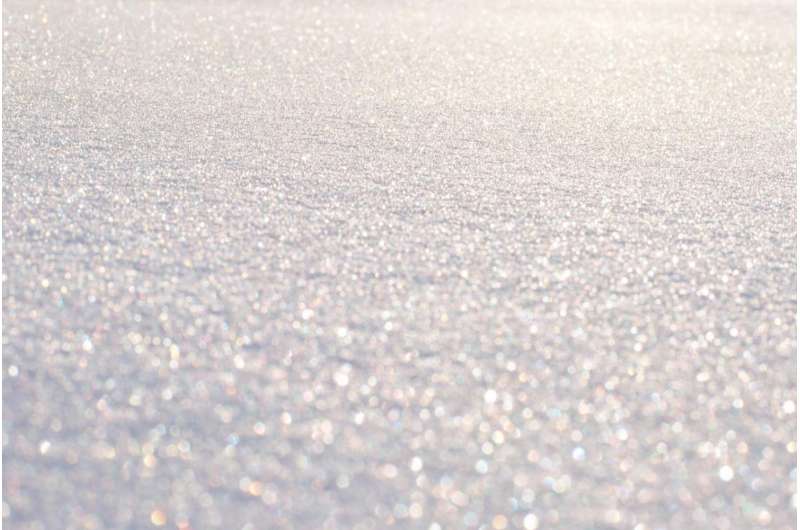Thermal blankets melt snow quickly

Removing snow piled high in parking lots and along roadsides could soon be a far less tedious task. In a study appearing in ACS' journal Langmuir, scientists report that they have tested sunlight-absorbing thermal blankets capable of melting snow three times faster than it would on its own. They say the blankets could slash snow-removal costs and reduce the risk of environmental contamination caused by soot and other products used to melt the white stuff.
Fresh snow reflects most of the sunlight shining on it, as well as much of the heat from those rays, back into the air. As a result, huge heaps of plowed snow can linger for weeks, even when the air is above freezing. Most cities in snow-prone regions either haul it to disposal sites or use gas-powered heaters to melt it. Both of these approaches are labor-intensive, time-consuming and costly. Depositing soot on fallen snow is an ancient, but effective way to increase sunlight absorption and speed up melting. However, soot, antifreeze and other commercial melting products can contaminate water and soil. Jonathan B. Boreyko and colleagues sought to find a more environmentally friendly way to melt snow using a new type of thin, conductive and thermally absorbent metal blanket.
The researchers created three types of these blankets made with an aluminum alloy. Two were coated with black enamel or black silicon-based spray paint that readily absorbed sunlight. The third blanket was bare aluminum, which reflected sunlight about as well as snow. In laboratory experiments, each of the blankets was draped over a pile of man-made snow stored in a refrigerated container. Then, the blanketed piles plus a pile of uncovered snow were exposed to a high-intensity lamp, which simulated sunlight. Snow under the bare aluminum blanket melted at about the same rate as uncovered snow. However, both of the blankets coated in black paint accelerated melting by about 300 percent, as measured by water runoff. The researchers conclude that these absorptive blankets could be used to quickly melt snowbanks in parking lots, driveways or roadsides without using heaters, soot or chemicals.
More information: Owen L. Hansen et al. Thermally Absorptive Blankets for Highly Efficient Snowbank Melting, Langmuir (2018). DOI: 10.1021/acs.langmuir.7b03182
Abstract
Fallen snow is one of the most reflective surfaces found in nature. As a result, snowbanks can take many weeks to melt even when the air temperature is above freezing. Here, we introduce a simple and passive method for quickly melting snowbanks by draping a thermally absorptive blanket over the snow. Using controlled experimental conditions, it was observed that snowbanks can melt 300% faster when a thermally absorptive blanket is placed on top. The mechanism is the threefold increase in absorptivity of the spray-coated blanket compared to bare snow, which allows for the vast majority of the irradiation to be used to overcome the latent heat of fusion.
Journal information: Langmuir
Provided by American Chemical Society




















